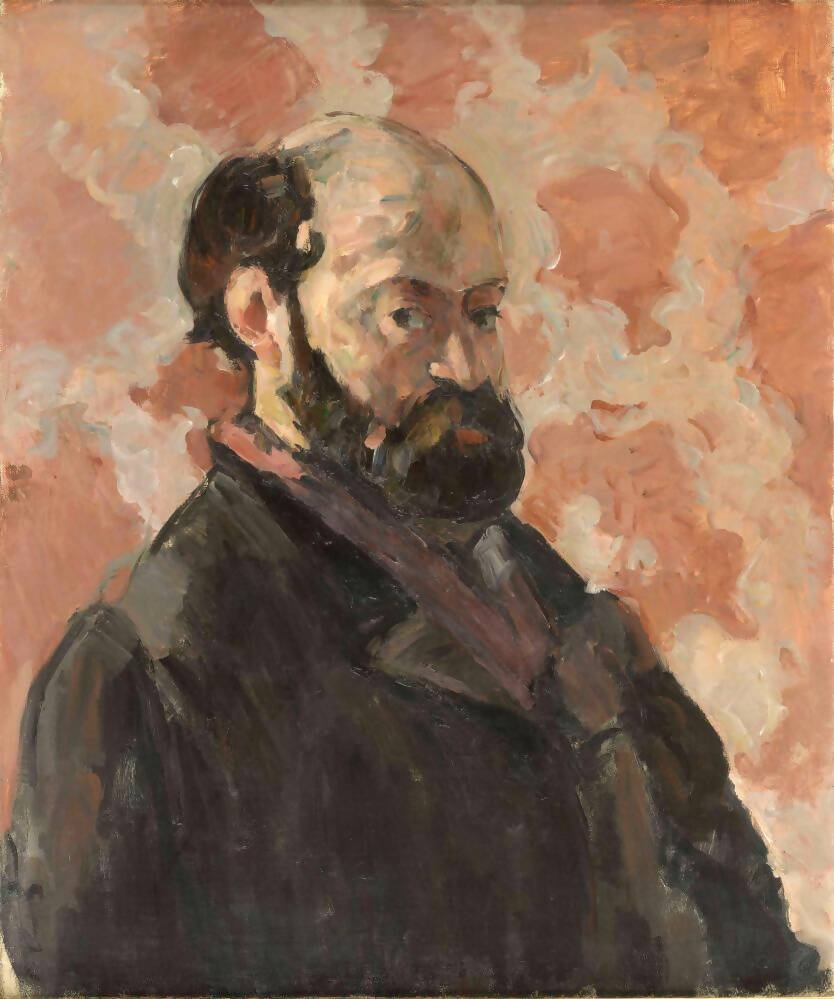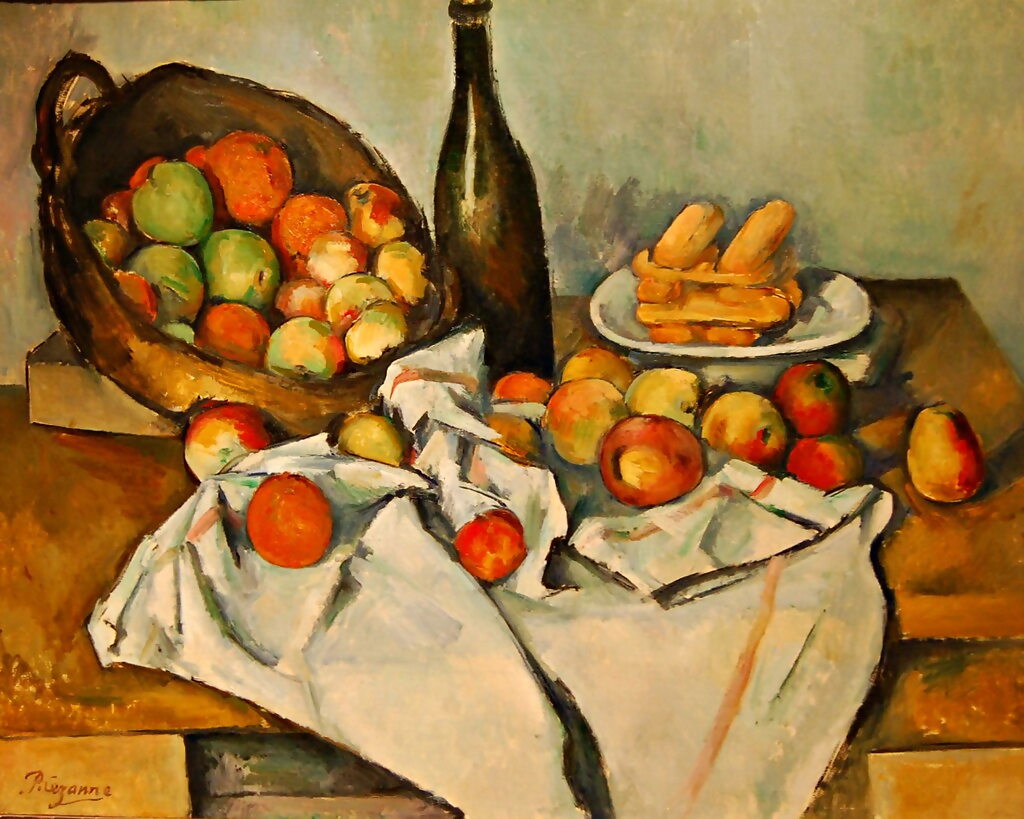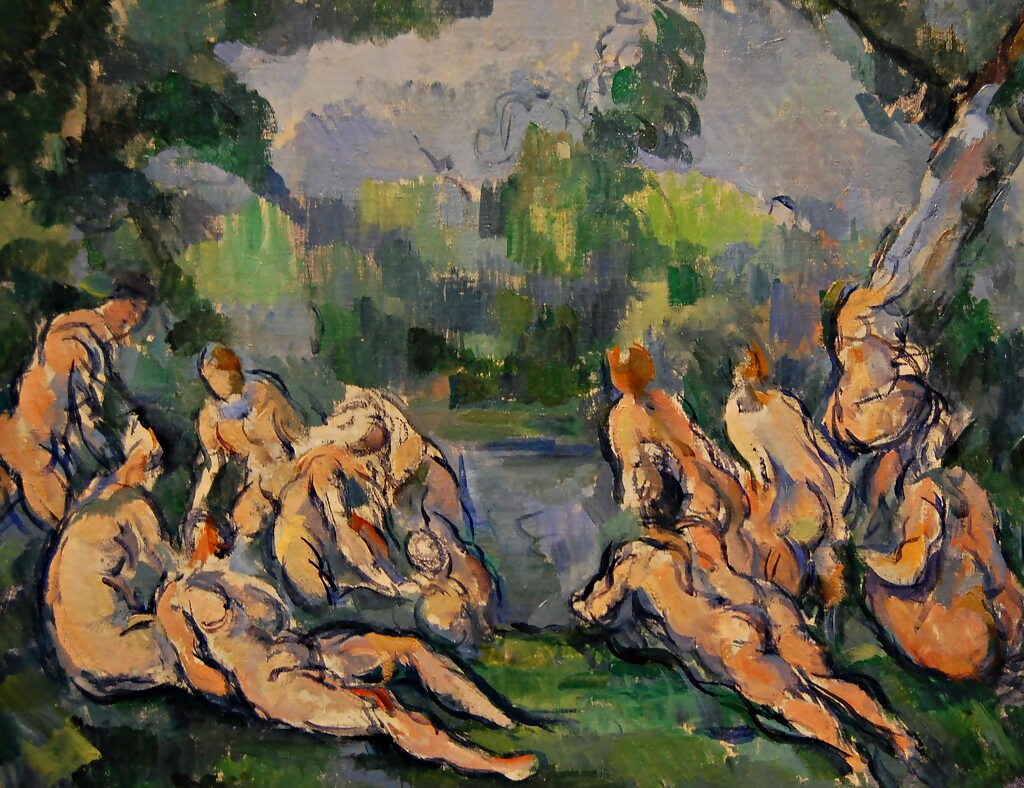
★★★★★
The landmark Cézanne retrospective travels across the pond from Chicago’s Art Institute to the Tate Modern.
The first major survey of his work in 30 years, the exhibition brings forward the full arc of his practice, ranging from his cornucopias of pastoral reflections to genre-redefining still lifes, and of course, his elysian bathers, while the more famed artworks (at least in the public and auction eye) are absent. And so, as popular celebrity falls away, what emerges is a towering register of artworks that serve not only to educate but illuminate, to draw back the curtain on the creative genius that was Paul Cézanne.
One could chuckle at the departures between an artist who saw mixed commercial success during his lifetime, and the rubberstamps of wealth that surround the show: its being held in the Eyal Ofer galleries, named after patriarch of the Israeli real estate and shipping dynasty, and sponsored by EY. But no matter – here, art triumphs contradiction.

Self-Portrait with a Pink Background © RMN-Grand Palais
The show’s first work is telling. Self Portrait with Pink Background is an uncompromising introduction. Wrapped in a thick overcoat and sporting an unkempt beard, Cézanne commands our gaze and projects the image of a provincial artist, and is accompanied by walls adorned with his notorious maxims, like ‘With an apple I will astonish Paris’ and ‘I paint as I see, as I feel…They also feel and see like, but they don’t dare…I dare’. The room becomes a calling card for an artist whose dual commitment and self-confidence shines through, and grants us a lasting impression that lingers through the exhibition.
From there we are taken through meta-narratives deemed paramount to weaving a thematic understanding of the artist’s oeuvre to “[focus] on the many tensions and contradictions in Cézanne’s work” (i). Pictorial convention quickly goes out the window as apples roll, mountains unfold from within themselves and subjects become disimagined and reimagined.
Location is important; it is Aix, Cézanne’s spiritual homeland, that provides the bucolic scenes in which we witness the development of his constructive brushstroke, the early rumblings of Cubism, and a tend towards abstraction, brilliantly expressed in Forest Floor (Sous-Bois). Compositional division is eliminated as the rich colours of southern France disintegrate into each other, and the impossible angularities of the trees form tartan to crown the work, a shining yet intense example of his later work.

Meanwhile, it is in the studio where Cézanne redefined the lowly genre of still life painting, and where his “research”, as the exhibition describes it, matures. In this isolated environment he carefully employs everyday objects (a plaster cupid aside) to interrogate the interrelations between object and space. The result? Mind-boggling visions of distorted perspective that seem to make the Earth swing on its axis and shift the very ground beneath us.
While providing incredible insights into the artist, the impetus on revealing his career-spanning arc can be guilty of falling into the more niche, perhaps even unnecessary areas of the Cezanne’s life. The third room, labelled Radical Times, seeks to explore the artist’s reaction to the fin de siècle turmoil that enveloped France, a familiar trope that is brought into discussion when his contemporaries are concerned. For some of whom, socio-political context is indeed crucial to understanding their work – Camille Pissarro (Cézanne’s mentor) and Paul Signac being notable examples – though here it falls flat, relying too heavily on speculation, and is ultimately unconvincing.
Nonetheless, momentum builds as we pass through the galleries, each facet of Cézanne’s practice joining in harmony like families of an orchestra until we find ourselves in the midst of the show’s crashing crescendo – his bathers. What began as a youthful revision of the classical tradition of portraying the nude in imagined landscapes, born from his desire “to make of Impressionism something solid and enduring like the art of museums”, would become a lifelong preoccupation with human form, colour, and crucially, the art that came before him. It is here, in these woven bodies of dappled flesh, that his creative vision becomes exegetical of unto itself, and where his art becomes consequential and does what all consequential – great – art does: prostrating to the past while carving a path to the future.

It appears strange thinking that it has taken the art world decades to come back to Cézanne when the immeasurable hand of his influence is made consecrate by the range of compositions lent by titans of art institutions globally (Musée d’Orsay, MoMa…), and the fact that several belonged to his fellow artists: Picasso held one of the L’Estaque landscapes, Monet – who owned 13 in total – treasured the uneasy Scipio, while Matisse almost bankrupted himself to purchase Three Bathers, which would become his talisman and exalt it as “[that which] has sustained me morally in the critical moments of my venture as an artist. I have drawn from it my faith and my perseverance” (ii).
As a real who’d-have-thunk-it example, Cézanne’s correspondence with Delacroix, the ambiguous The Eternal Feminine, was lent by Jasper Johns. Though with further thought, ownership by the American conceptualist makes perfect sense. His 1964 dictation “Take an object / Do something to it / Do something else to it. [Repeat.]” finds kinship with Cézanne’s employment of a plaster cupid as a vehicle for inquisition. Moreover, the selection of texts written by contemporary artists such as Ellen Gallagher, Kerry James Marshall and Luc Tuymans speaks to the artist’s timeless impression, and ceaseless relevance.
The Tate proudly ordains the show as a “once-in-a-generation exhibition”, high acclaim that could ring no more true. To witness the full glory of an artist’s mastery is a rare pleasure – let alone the father of modern art – and is not one to be passed on; the exhibition runs till March 12th, we wouldn’t advise missing it.

